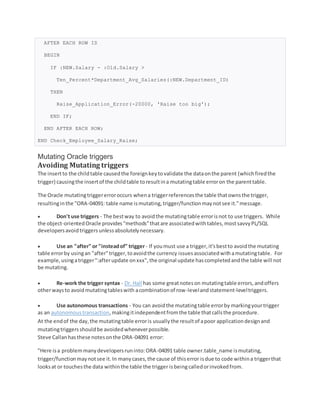The document discusses different ways to avoid mutating table errors when using triggers in Oracle:
1. Use a compound trigger instead of a row-level trigger to avoid the error. A compound trigger allows initializing variables before and after statements to prevent mutating errors.
2. An example is given of a compound trigger that enforces a business rule limiting salary increases to 10% of the department average without causing a mutating error.
3. The mutating error occurs when a trigger references the table that owns the trigger, preventing the trigger from seeing changes made by its own statement.







